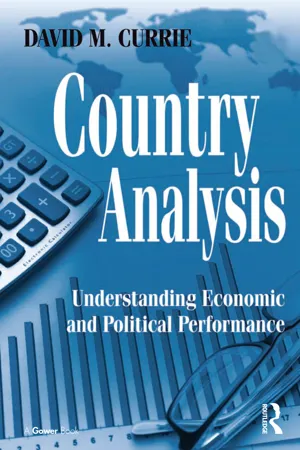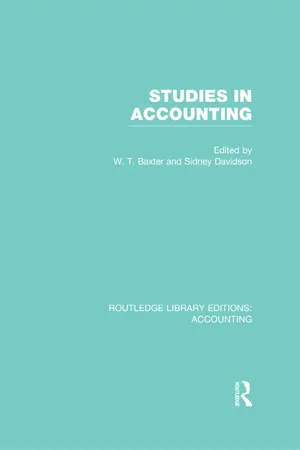Economics
Appreciation and Depreciation
Appreciation and depreciation refer to changes in the value of assets or currencies over time. Appreciation occurs when the value of an asset or currency increases, while depreciation occurs when the value decreases. These terms are commonly used in economics to describe the fluctuation of prices and exchange rates in financial markets.
Written by Perlego with AI-assistance
Related key terms
1 of 5
3 Key excerpts on "Appreciation and Depreciation"
- eBook - ePub
Country Analysis
Understanding Economic and Political Performance
- David M. Currie(Author)
- 2016(Publication Date)
- Routledge(Publisher)
It’s not because we’re buying euros that we know to multiply or divide by the exchange rate, it is the way the exchange rate is quoted. There is no universal rule that you always multiply or always divide by the currency quote, and it doesn’t make any difference whether you’re buying or selling. It all depends on how the exchange rate is quoted. All you have to do is make up a few examples using various prices, try exchange rates quoted in both directions, and practice them a few hundred times. Pretty soon it will become second nature. That’s the advantage that many foreigners have over us Americans – they exchange currencies constantly, most of us do it only occasionally.Appreciation and Depreciation
Now let’s examine the other currency exchange: when we receive 1,000,000 euros from the Treasury of France in three months, we must sell those euros for dollars (another way of saying the same thing is that we must use the euros we receive to buy dollars). The difficulty is that we don’t know now what will be the value of the euro in three months. Currencies constantly change value as factors in the currency markets fluctuate. Political situations, economic indicators, balance of payments, and market psychology are never constant, and exchange rates reflect the fluctuation. We are exposed to currency risk or exchange risk : the risk that one currency will exchange for a different amount of another currency.When a currency increases in value, the currency is said to appreciate. Appreciation means the currency is worth more of another currency. If you own it, you can sell it for more of another currency. If you don’t own it and need to buy it, you’ll have to pay more for it than before it appreciated. It’s just the opposite with depreciation , which means that the currency is worth less of another currency. If you own it, you can’t sell it for as much of another currency. If you don’t own it, you can buy it at a lower price than previously. Appreciation and Depreciation occur within seconds on the currency market, although you and I don’t notice it until we look at quotes on television or in the newspaper, or until we go abroad and see them in action. Box 8.1 - eBook - ePub
- William Baxter, Sidney Davidson(Authors)
- 2014(Publication Date)
- Taylor & Francis(Publisher)
DepreciationDepreciation and Obsolescence as Factors in Costing *W. ARTHUR LEWISProfessor of Political Economy, Princeton UniversityI The Meaning of DepreciationTHE value of an asset usually changes with time. In some cases the asset becomes more valuable as time passes. For example, wine matures with time. Favoured sites in a rapidly growing city become more valuable as population grows. The assets used to produce a new commodity become more valuable as the commodity becomes more popular. And most assets increase in monetary value in an inflationary situation, though the “real” value of some, corrected for changes in the general price level, may actually be falling.Inflation apart, most physical assets decline in value after a time, even though there may be passages in their life when they are appreciating in value. In some cases the decline in value can be prevented by continually reinvesting in the asset, to replace what is lost. For example, the farmer maintains the value of his land by investing fertilisers, and by spending money on soil practices which conserve fertility. Buildings and bridges can be kept going for a very long time in the same way. Even some machinery can be kept going; one can still find in some factories steam boilers which were first installed eighty years ago. But most man-made assets eventually give out altogether.Depreciation measures the amount by which the value of an asset falls through time. This depends partly on how well the asset is maintained—whether the buildings are painted regularly, whether leaks in the boiler are fixed at once, whether broken parts are immediately replaced, and so on. The cost of maintenance and repair is not usually included in depreciation. The cost of keeping the asset “in a good state of repair” is usually calculated separately, and treated as an operating expense on the same footing as wages and raw materials. Depreciation therefore measures the extent to which the value of the asset has deteriorated although it is being kept in a good state of repair. What constitutes a good state of repair is a matter for the judgement of the management, or, if the management wishes to sell the asset, it is a matter for the consensus of the second-hand market. - eBook - PDF
- Donald E. Kieso, Jerry J. Weygandt, Terry D. Warfield, Irene M. Wiecek, Bruce J. McConomy(Authors)
- 2019(Publication Date)
- Wiley(Publisher)
Also, they may talk about what the new car’s trade-in value will be in several years. In both cases, the decline in value is generally referred to as depreciation. To accountants, however, depreciation is not a matter of valuation (or a method of de- termining an asset’s declining value). Depreciation—or amortization, as it is also called— is a means of cost allocation. It is the process of allocating the depreciable amount of a PP&E asset to expense in a systematic manner to those periods expected to benefit from its use. As explained in this chapter, the depreciable amount is the asset’s cost less its residual amount. (There could, however, sometimes be a different value used instead of cost, such as that used when the revaluation model is applied.) See Underlying Concept 11.1 for further discussion. Underlying Concept 11.1 Assessing the fair value of long-lived assets at each reporting date may provide more relevant information to users. However, amortized cost is more reliable and veri- fiable. So, when evaluated on a cost-benefit basis, most preparers continue to support the use of amortized cost. Depreciation Depreciation 11-5 It is true that an asset’s value changes between the time it is purchased and the time it is sold or scrapped. Most companies use a cost allocation approach rather than a valuation approach, however. This is because objectively measuring the changes in their assets’ values every reporting period is often difficult and usually costly. As mentioned above, the terms amortization and depreciation are almost interchange- able. Amortization is the general process of allocating the carrying amount of any long-lived asset to the accounting periods that benefit from its use. It can also specifically refer to this process for intangible assets. The term depreciation is reserved for property, plant, and equipment, and depletion is used only with natural resource assets.
Index pages curate the most relevant extracts from our library of academic textbooks. They’ve been created using an in-house natural language model (NLM), each adding context and meaning to key research topics.


